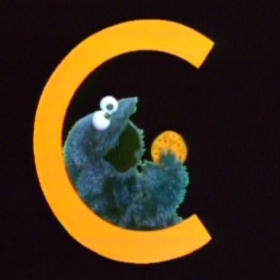How to Tell the Time

There are basically two ways to tell the time in Icelandic: analogue and digital. Until the appearance of digital clocks, everybody told the time in the analogue way. Since the popularisation of digital clocks and smartphones, many people, particularly the younger generations, prefer the digital way. No matter which method one prefers to use, it‘s best to understand both.
First we‘ll take a look at how to tell the time analogue-style, as well as some words to indicate the time of day, and the grammar of the numbers involved in telling the time. Then we’ll quickly review digital clocks, which are much simpler. In most cases, which method a speaker uses depends on whether they are reading the time from an analogue or a digital clock (assuming they know how to read an analogue clock).
Analogue Clock
Hvað er klukkan? translates as what time is it? (lit. what is the clock?) Here are some examples of how to answer.
The answer begins with hún er (she is, as the word klukka is feminine), followed by the minutes, and the hour coming last. The numbers from 1-4 are in the neuter: eitt, tvö, þrjú, and fjögur. This likely stems from the clock in ancient times being measured in högg or slag (both translate as stroke, as in at the stroke of midnight), and are neuter words.

Hún er eitt > It’s one o’clock.
Note the lack of an am/pm marker. This is discussed in more detail in the Time of Day section below.

Hún er fimm mínútur yfir tvö > It’s five minutes past two.
Yfir (lit. over) is equivalent to the English past.

Tíu mínútur yfir þrjú > Ten minutes past three.
In casual speech, hún er may be omitted. What time is it? Ten minutes past three.

Hún er korter yfir fjögur > It’s a quarter past four.
Note the lack of mínútur with the word korter. This literally means quarter (of an hour).

Tuttugu mínútur yfir fimm > Twenty minutes past five.

Hún er tuttugu og fimm mínútur yfir sex > It’s twenty five minutes past six.

Hún er hálf átta > It’s seven thirty (lit. it is half-eight).
Note the omission of yfir or í, and that minutes are not mentioned. Also note that the hour specified is the next hour.

Hún er tuttugu og fimm mínútur í níu > It’s twenty five minutes to nine.
Note that thirty-five minutes is not employed with the analogue clock. Instead í, equivalent to the English to here, is used.

Hún er tuttugu mínútur í tíu > It’s twenty minutes to ten.

Hún er korter í ellefu > It’s a quarter to eleven.
Again, note the lack of mínútur with the word korter.

Hún er tíu mínútur í tólf > It’s ten minutes to twelve.

Hún er fimm mínútur í eitt > It’s five minutes to one.

Hún er tólf / það er miðnætti / það er hádegi > It’s twelve o’clock / it’s midnight / it’s noon.
Miðnætti is the Icelandic equivalent to midnight and hádegi is noon.
Am/pm and Time of Day
Icelandic keeps written military time, writing 13:00 and 01:00 for 1pm and 1am. In spoken language, however, those would both be pronounced klukkan eitt or hún er eitt. Icelandic has no equivalent to the am/pm dichotomy. In most cases, context is used to indicate whether something is in the morning or evening: for instance, going out for drinks is a pm activity and breakfast tends to take place in the am.
On the very rare occasion that clarification truly is necessary, um morguninn (in the morning), um daginn / eftirmiðdaginn (in the day / afternoon), um kvöldið (in the evening), or um nóttina (in the night) is used. Um eftirmiðdaginn and um daginn are interchangeable synonyms in Icelandic.
When used in context as an adverb of time, hún er ___ is not used, but klukkan ___.
- Jón kom ekki heim fyrr en klukkan sex um morguninn > Jón didn’t come home until six in the morning (6am).
- Guðrún vinnur á næturna, svo hún fer að sofa klukkan fjögur á daginn > Guðrún works nights, so she goes to sleep at four in the day (4pm).
- Sólin er farin að setjast klukkan þrjú um eftirmiðdaginn > The sun has started to set at three in the afternoon (3pm).
- Sigurður var svo þreyttur að hann vaknaði ekki fyrr en klukkan níu um kvöldið > Sigurður was so tired he didn’t wake up until nine in the evening (9pm).
- Þeir kölluðu Guðmund upp í vinnu klukkan tvö um nóttina > They called Guðmundur into work at two in the night (2am).
As hádegi (noon) and miðnætti (midnight) are more specific times of day than all of the above, they are treated differently. A speaker can talk about something happening í hádeginu, meaning at noon, at the widest 11:30-13:00. They may also use um hádegi, meaning vaguely around noon, likely somewhere around 10:00-14:00. Miðnætti (midnight) is usually á miðnætti.
- Helga fær sér að borða í hádeginu > Helga gets something to eat at noon (likely using her lunch break from work).
- Ólafur ætlar að koma einhverntíman um hádegi > Ólafur is going to come sometime around noon.
- Vampírur fara á stjá á miðnætti > Vampires go abroad at midnight.
Repeat events are indicated by those same words, but in the plural: á morgnana (in the mornings), á kvöldin (in the evenings), and á næturna (at night). Daginn and eftirmiðdaginn, hádegi and miðnætti are not pluralised to indicate repeat events. Á daginn (in the day) in the singular is used for the time between noon and 6pm, but hádegi and miðnætti require adverb support, like alltaf, for repeat events.
- Sigríður fær sér aldrei morgunmat á morgnana > Sigríður never has breakfast in the mornings.
- Kristín fer í salsa tíma á kvöldin > Kristín goes to salsa classes in the evenings.
- Barnið heldur vöku fyrir Gunnari á næturnar > The baby keeps Gunnar up at night.
- Margrét vinnur ekki á daginn, hún vinnur á næturnar > Margrét doesn’t work during the day, she works at night.
- Ég fer alltaf í ræktina í hádeginu > I always go to the gym at noon.
- Egill fer alltaf að sofa á miðnætti > Egill always goes to sleep at midnight.
Exactness
In the examples above there are no entries for minutes that are not multiples of five. This is because single minutes are generally rounded to the nearest five. Thus 3-7 minutes past the hour are called 5 minutes past, 8-12 minutes are called 10, 13-17 minutes are called korter etc.
If it is absolutely necessary to note the time with exactness, use the following word forms for the numbers 1-4. They are in the feminine because mínúta is feminine, and in the accusative because of the Temporal Accusative explored in Non-Deictic Timing. The numbers from 5 and up don’t change.
1 – eina mínútu > One minute.
Hún er eina mínútu yfir tvö > It’s one minute past two.
2 – tvær mínútur > Two minutes.
Hún er tvær mínútur í þrjú > It’s two minutes to three.
3 – þrjár mínútur > Three minutes.
Hún er þrjár mínútur yfir fjögur > It’s three minutes past four.
4 – fjórar mínútur > Four minutes.
Hún er fjórar mínútur yfir eitt > It’s four minutes past one.
Modifiers
There are many ways to talk about the clock that aren’t directly related to reading it. Expressions like around 5, between 1 and 2, and on the dot, for example, work as modifiers with the time that is read from the clock. We will explore modifiers like these more fully in an upcoming article.
Digital Clock
The digital clock is significantly simpler than its analogue counterpart, as is to be expected. It’s simply read from left to right: the hour comes first, in the neuter, followed by the minutes, in the neuter as well. Korter and hálf are not used. With the digital clock, military time and individual minute implements are often used in spoken language (speakers are often reading the time as they speak, so rounding up or down would take more thought, not less).
00:01 – Hún er núll eitt.
02:15 – Hún er tvö fimmtán.
13:03 – Hún er þrettán núll þrjú.
04:30 – Hún er fjögur þrjátíu.
Summary
You can tell time using the digital clock – reading left to right, using neuter numbers, and simply reading the numbers you see. You can also use the analogue clock, which follows more challenging conventions. It’s good to be familiar with both. Am and pm is never used, but time of day can be specified if it is truly necessary. Repeat events are indicated with the plural form of the time of day.
Related reading
If you found this interesting, you might also be interested in these articles.




